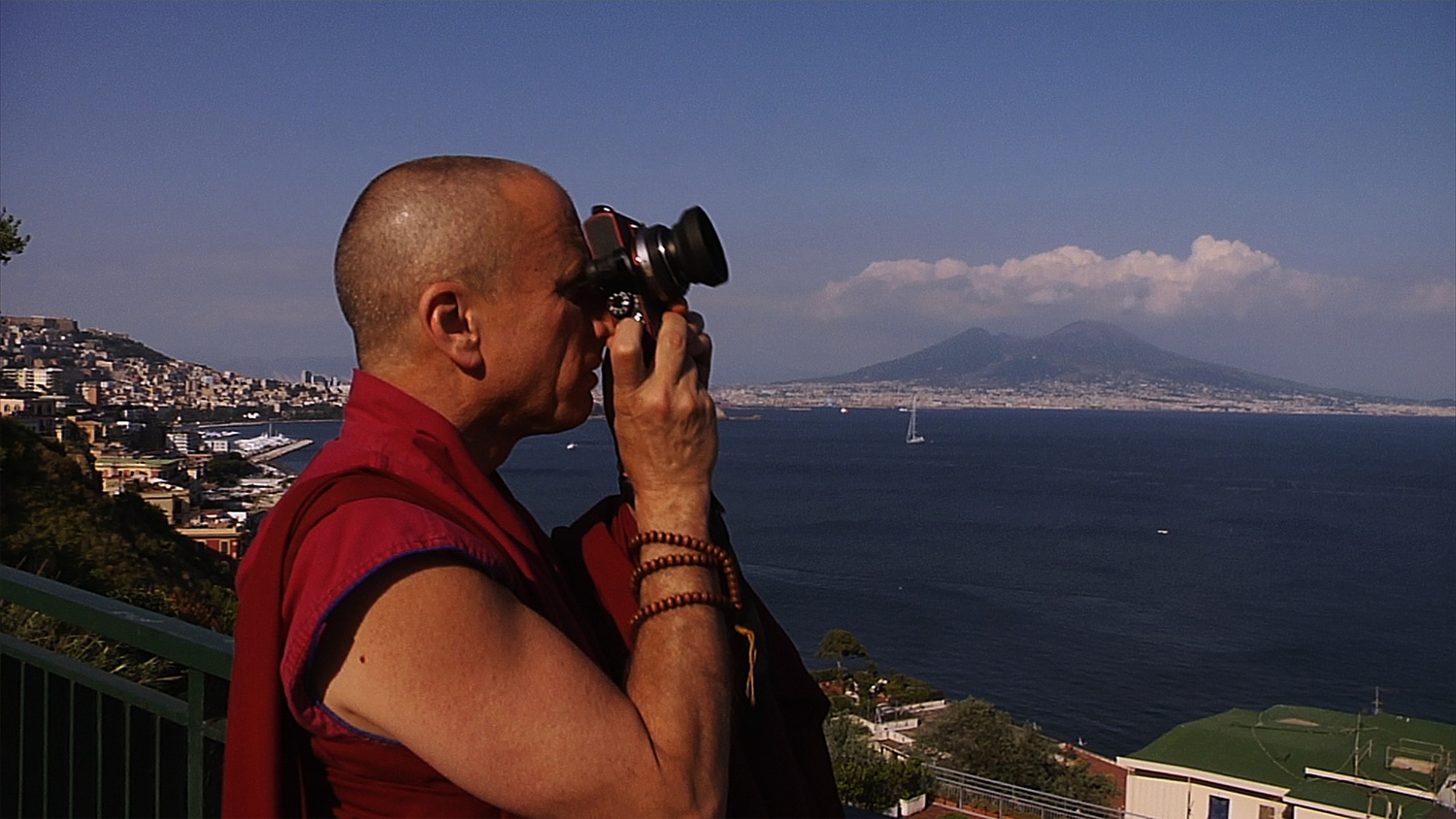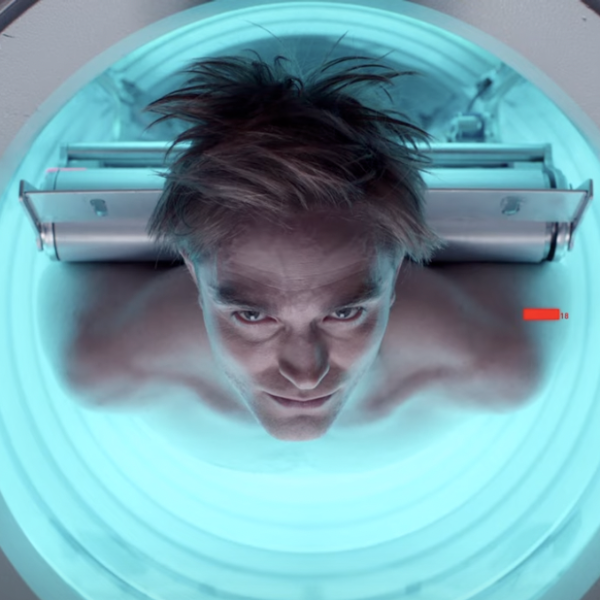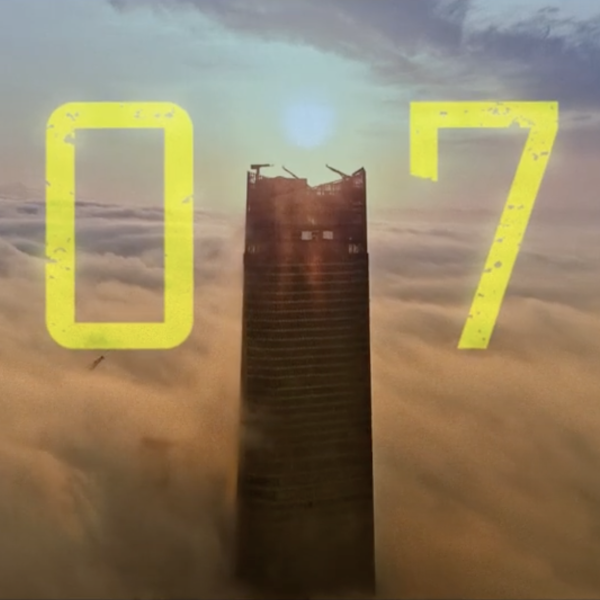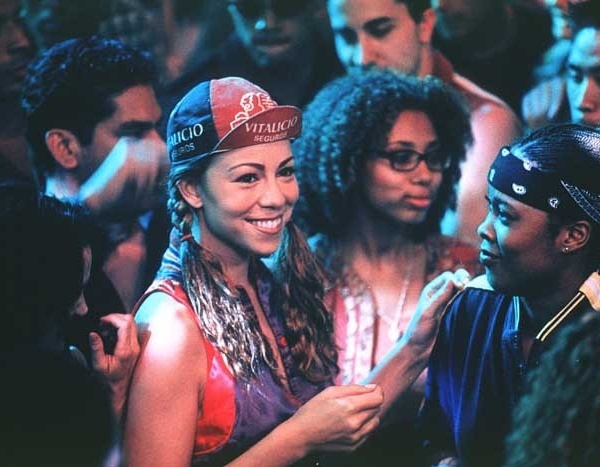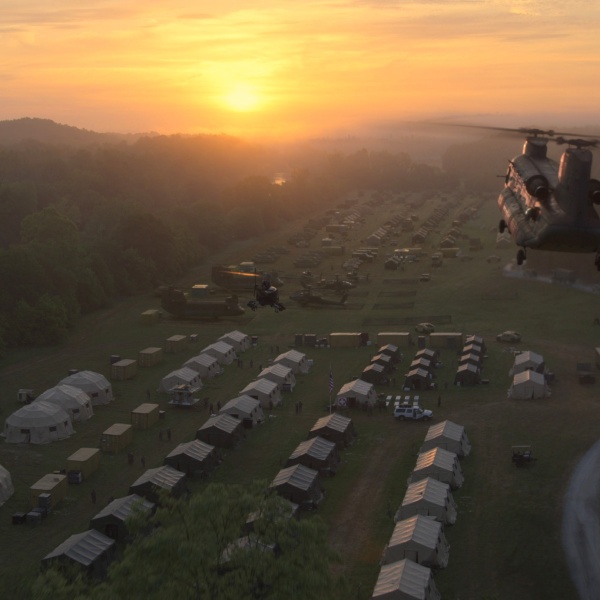Privileged photographer-turned-monk Nicholas Vreeland spoke at the Film Society of Lincoln Center’s Furman Gallery on Saturday about the film “Monk With A Camera,” which documents his journey on becoming an ascetic buddhist monk in India.
Born into high-society, Nicholas counts former Vogue Editor Diana Vreeland as his grandmother and famed fashion photographers Irving Penn and Richard Avedon as a teachers. Speaking on the impact working with Penn had on him, Nicholas said: “The Penn studio instilled in me a monastic simplicity- his photographs have a monastic simplicity. There’s nothing gimmicky, there’s nothing added, there’s nothing superfluous, there’s a sort of search for a certain purity.”
Vreeland also addressed his personal relationship to Penn himself. “He holds a position of teacher in my life in a spiritual sense,” he said. “There was this very disciplined, monastic quality to the way he led his life and he wasn’t a flamboyant photographer.”
On the topic of meditation, Vreeland credited a TIME magazine article on the Maharishi. “[There was] one paragraph on how you do it, which I mention in the movie, and that’s how I learned to meditate,” Vreeland said.
According to Nicholas, Richard Avedon did not connect with Buddhism. “He was never interested in spirituality,” Vreeland said. “He was always surprised by his son’s interest in Buddhism.” His son, John Avedon, introduced Nicholas to his teacher, which all led his life as a buddhist monk on a Tibetan refugee settlement in India.
 Vreeland also discussed the process of taking photographs to raise money for the monastery. “In the movie you see the wall against which I photographed his Holiness [The Dalai Lama] and it was looking pretty disheveled,” he said, “but when I was living in that building, I kept it white. I would white-wash it often to just keep it crispy-white and it aims north, and so it was the perfect backdrop if you wanted a nice white back drop. […] When we shifted, I always wanted to create a white background aiming north where I could take portraits, and I thought: this is my opportunity… I’ll do a series of portraits of monks against this.”
Vreeland also discussed the process of taking photographs to raise money for the monastery. “In the movie you see the wall against which I photographed his Holiness [The Dalai Lama] and it was looking pretty disheveled,” he said, “but when I was living in that building, I kept it white. I would white-wash it often to just keep it crispy-white and it aims north, and so it was the perfect backdrop if you wanted a nice white back drop. […] When we shifted, I always wanted to create a white background aiming north where I could take portraits, and I thought: this is my opportunity… I’ll do a series of portraits of monks against this.”
Nicholas spoke positively of his famous grandmother, who tried her best to accept him and his path. “When I came to live in New York, we became even closer—I lived in her apartment for a long time and she respected the spiritual journey I was embarking on even if certain aspects of it were sort of contrary to her ideals,” he said. “She believed in beauty, she believed in making the world a more magnificent place, and she believed the way you did that was by leading a more magnificent life.”
His shoes, shiny burgundy Birkenstocks worn with socks of the same color, and cellphone were a source of amusement for some attendees at Saturday’s event.”Things have changed a great deal about how people perceive a monk, even a shaved head is acceptable, it’s fashionable,” he said. Speaking about his reluctance to have cameras follow him — for fear that appearing in a film would contradict his values of humility — Vreeland said that it was the advice of another Buddhist that made him change his mind about the project. “This would be of benefit to others, and you should do it,” Vreeland recalled his colleague advising him.
Vreeland shared how he came to know actor Richard Gere, who appears in the film and was a Zen buddhist since college.”He suggested John [Avedon] work on a script for a movie about Tibet,” Vreeland said. “With John, he got to know the Dalai Lama. He went to teachings and then came to India, funnily enough, he came to India at the end of 1986, it was just as I was going to receive my full ordination so I was already a monk…and he was there attending the teachings of his Holiness. We shared a room— because there were no rooms at the time.”
While Nicholas didn’t mind sharing a room, he admitted that lending out his camera was slightly harder to do.”If someone came up to me and said, ‘Would you give me your camera?’ I think I’d have a hard time saying yes,” he admitted. Eventually, he told the filmmakers, “I was happy to lend you my camera… I could feel the concern tighten up in me. Of course that is attachment and worry and what we are working to fight against.”
The Dalai Lama eventually appointed Nicholas to be an abbot, which made him the first Westerner to occupy that post in Tibet Buddhist history. Speaking on the restrictions of that role, Nicholas joked, “The abbot is not allowed to go out on walks and chat with people — the abbot stays in his room and acts holy.” He avoided commenting explicitly on the possible resentment other monks might have about having an American monk serve in such a prestigious role, of which Nicholas has served two and a half years of the obligatory six.
For the committed Buddhist, adjusting to his adopted home comes down to accepting this: “You’re not going to change India but you can change yourself and accommodate India and you’ll be happy.”
READ MORE: Here Are All the Movies Opening Today, November 21. What Will You See?
